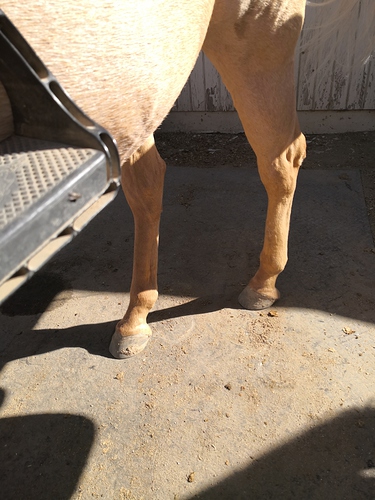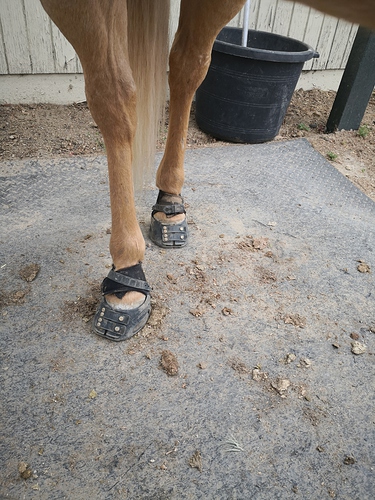Sorry! I wrote that long ramble before I took my Adderall (seriously), here’s a simple version:
I believe there’s a problem with my mare’s left hind. She had a bone chip on outside of the cannon bone of her left hind removed and I think something’s still bothering her. I have had four vets, one chiropractor and one massage/bodyworks person check my horse and watch me ride. They all say she’s fine. I don’t agree.
Her back end does not feel stable/feels wobbly to me, don’t know how else to explain it. Sometimes it feels like she’s walking “spread out” in the back. She sometimes loses/drags the left hind going downhill and cantering in the arena. I can feel her butt suddenly drop. After I ride her the left hind leg is turned to the right; sometimes both hind legs are twisted to the right. Vets think this is a conformation issue. I think she’s twisting the back end to avoid pain/discomfort.
This doesn’t happen when anyone else rides her, however I’m the heaviest rider.
The vet is due to come out for shots, so any suggestions what I could ask her?
Is it possible there’s still some bone chip left and it’s only bothering her due to my weight?
Is there other damage she could have done by kicking?
I don’t want this turning into a serious soundness issue as she gets older.
I have pictures of the twisted hind end but don’t know how to post them.
Thank you!


